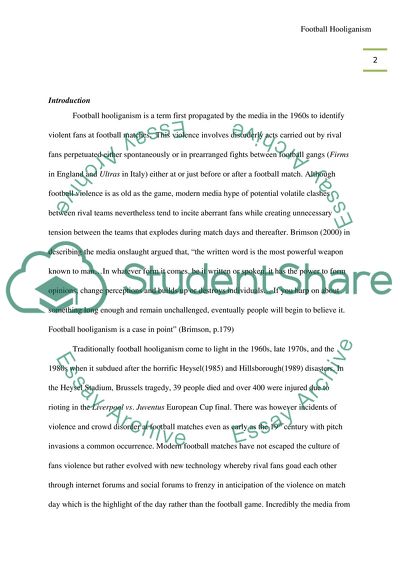Cite this document
(Football Hooliganism is a Moral Panic Case Study, n.d.)
Football Hooliganism is a Moral Panic Case Study. Retrieved from https://studentshare.org/social-science/1723603-critically-discuss-the-proposition-that-football-hooliganism-is-a-moral-panic-fuelled-by-media-amplification-and-populist-misconception
Football Hooliganism is a Moral Panic Case Study. Retrieved from https://studentshare.org/social-science/1723603-critically-discuss-the-proposition-that-football-hooliganism-is-a-moral-panic-fuelled-by-media-amplification-and-populist-misconception
(Football Hooliganism Is a Moral Panic Case Study)
Football Hooliganism Is a Moral Panic Case Study. https://studentshare.org/social-science/1723603-critically-discuss-the-proposition-that-football-hooliganism-is-a-moral-panic-fuelled-by-media-amplification-and-populist-misconception.
Football Hooliganism Is a Moral Panic Case Study. https://studentshare.org/social-science/1723603-critically-discuss-the-proposition-that-football-hooliganism-is-a-moral-panic-fuelled-by-media-amplification-and-populist-misconception.
“Football Hooliganism Is a Moral Panic Case Study”, n.d. https://studentshare.org/social-science/1723603-critically-discuss-the-proposition-that-football-hooliganism-is-a-moral-panic-fuelled-by-media-amplification-and-populist-misconception.


